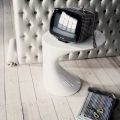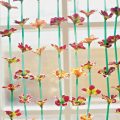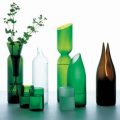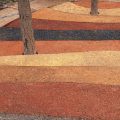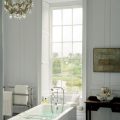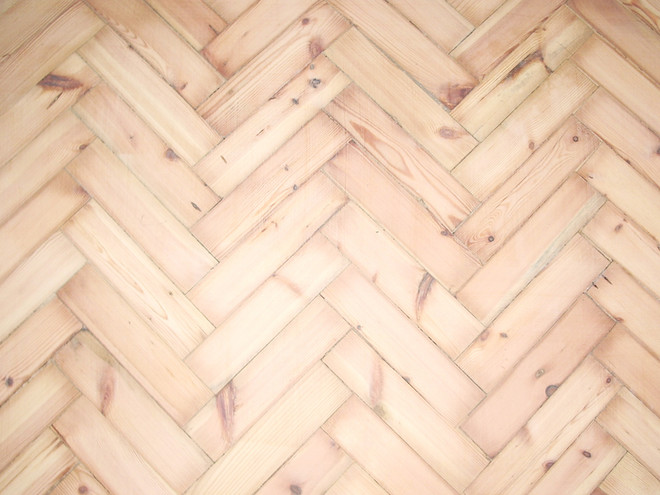 Ecostandard
Ecostandard
Can be used
These materials are natural, but withreservations…Parquet and parquet boardWood is an environmentally friendly material, there is nothing better than it. But! The whole thing can be ruined by varnishing.— Cheap synthetic varnishes emit aromatic hydrocarbons, explains Nikolay Krivozertsev, technical expert of «Ecostandard». — Our experts found toluene and xylene in such varnishes, which are used as solvents. These substances can irritate the mucous membrane of the eyes, cause skin diseases, and with constant exposure threaten serious disorders of the nervous system. The glue that connects the boards can emit toluene and acetone - and these are toxic substances. What to do: Do not buy cheap synthetic varnishes. Carefully read the label - what the varnish is made of. If you have found the money for 2014, do not spoil it with a bad coating! Ceramic tilesAlso almost ideal, from an ecological point of view, finishing. Tiles are made of natural materials and usually do not emit any harmful substances. But! The glue with which the tiles are attached may contain phenol and toluene (see "Cut and save!"). What to do: Look at the composition of the glue and do not use harmful ones. Print and save! See these names in the composition of the product - think about your health:
- Toluene, xylene, acetone (solvents) - toxic substances, can irritate the mucous membrane of the eyes, the skin.
- Formaldehyde, phenol formaldehyde - carcinogenic, toxic substances. Being allocated, irritate a throat, bronchial tubes, a mucous membrane of eyes, reduce immunity.
- Phenol is toxic. Fumes irritate the mucous membranes of the eyes, respiratory organs, and skin.
- Benzene - in large doses causes nausea and dizziness, with prolonged exposure can cause blood diseases.
- Dioxins are very dangerous substances that can accumulate in the body, suppress immunity and provoke the development of cancer.
Paper wallpaper— Between wallpaper and wallthere must be a layer of air, - explain the experts of "Ecostandard". This condition is fully met by paper wallpapers - the cheapest ones. They let air through. As well as new-fangled, but expensive "eco-wallpapers" - made of jute, bamboo, canvas, etc.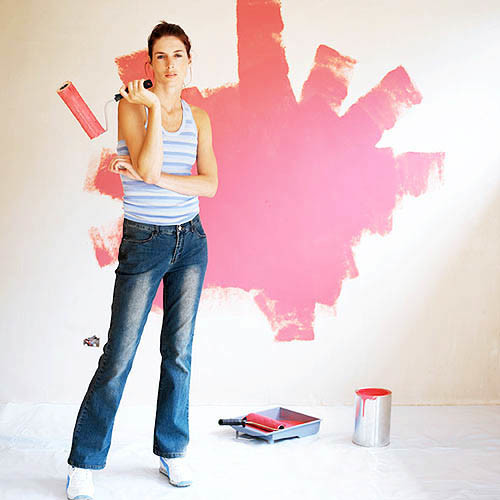
Better avoided
Laminate coating is extremely popular becauseдостаточно экономично. А вот экологичным его назвать сложно. Состав его не сильно отличается от давно «заклейменных» ДВП (древесно-волокнистая плита) и ДСП (древесно-стружечная плита) — во всех этих материалах обычно используется формальдегид. Вопрос — в каких количествах?Что делать: Обращайте внимание на то, для каких помещений предназначен конкретный вид ламината (смотрите этикетку или попросите у продавца инструкцию).В любом случае это не лучший вариант для детской.ЛинолеумТеоретически существует такая вещь, как натуральный линолеум, но вы его вряд ли найдете в продаже — обычно он используется в медицинских учреждениях.Место же большинства видов синтетического линолеума, по мнению экологов, — на лоджии и в подсобных помещениях.— Недорогой линолеум, особенно новый или когда нагреется под прямыми солнечными лучами, выделяет целую гамму разных органических веществ, входящих в его состав, — поясняет специалист «Экостандарта» Денис Ананьев. — Вспомните, как пахнет линолеум в магазине! Дорогой импортный линолеум не такой вонючий. Но по стоимости приближается к паркету, и уж лучше купить паркет.Что делать: Если вы все-таки остановили выбор на линолеуме, не покупайте дешевый. Особенно если на этикетке написано: «Только для производственных помещений» (на рынке такой впарить могут). Линолеумный пол надо мыть не реже 2 — 3 раз в неделю, чтобы на нем не скапливался электрический заряд.КовролинЧисто по химическому составу он не опасен. Но экологичным не считается. Поскольку если вы аллергик или астматик, будут большие проблемы! А еще ковролин отлично впитывает запахи, поэтому его лучше не использовать в комнате, где курят.Что делать: Запастись моющим пылесосом. Этот агрегат избавит и от пыли, и от запаха. Но если вы склонны к аллергии, лучше ковролином не обзаводиться.Виниловые обоиЕсли обои не дышат, то есть воздух не пропускают, то между ними и стеной может образоваться плесень. С виниловыми обоями, бывает, так и случается. Поэтому, по мнению экологов, винил больше подходит для прихожей и кухни.Что делать: В детской и спальне лучше поклеить бумажные обои.50% отделочных материалов, предлагаемых сейчас на рынках, не пройдут элементарной экологической экспертизы и могут считаться не безопасными для здоровья.(По данным компании «Экостандарт».)Пластиковые панели— Если вы обошьете пластиковыми панелями туалет или ванную — ничего страшного, — поясняют эксперты «Экостандарта». — А вот у плиты, где высокая температура, этот материал при нагревании начинает выделять диоксины. То же, кстати, касается пластиковых окон. В обычных условиях они совершенно экологичны. Но при пожаре плавятся — и тогда опасны.КраскиИменно краска считается самым неэкологичным материалом. Конечно, не любая. Но дешевок и подделок у нас предостаточно.— Некачественные краски могут вызывать аллергию, — объясняют экологи. — В тяжелых случаях — проблемы с печенью, почками, нервной системой.Что делать: Экологи советуют покупать краски известных брэндов — они соответствуют международным стандартам. И лучше — в сетевых магазинах, где меньше шансов приобрести подделку.Краски на водной основе (водоэмульсионка), как правило, безопасны — они растворителей не содержат.Как купить безопасную «отделку»1. Степень экологичности отделочных материалов обозначается на упаковке Е1, Е2, Е3. Это класс эмиссии вредных веществ.
- Е1 - an ideal material, suitable even for children's rooms;
- E2 - suitable for antechamber, kitchen, bathroom. For the bedroom and living room is better not to take;
- E3 - material for decoration of industrial premises. For the apartment is not suitable.
2. Be sure to ask for a hygienic certificate. The certificate always indicates which harmful substances are emitted from the purchased paint or, for example, the wall panel. If these substances are recruited 5 - 10, think about it - or maybe it is not worth buying anyway? True, many hygiene certificates are fake, they are easy to buy. And if certificates in good stores are most likely real, then there are many “leftists” in the markets. 3. Many finishing materials have special badges for ecological purity. For example, “Grünupunkt” (on imported materials), Ecomaterial (on domestic materials) and others.





